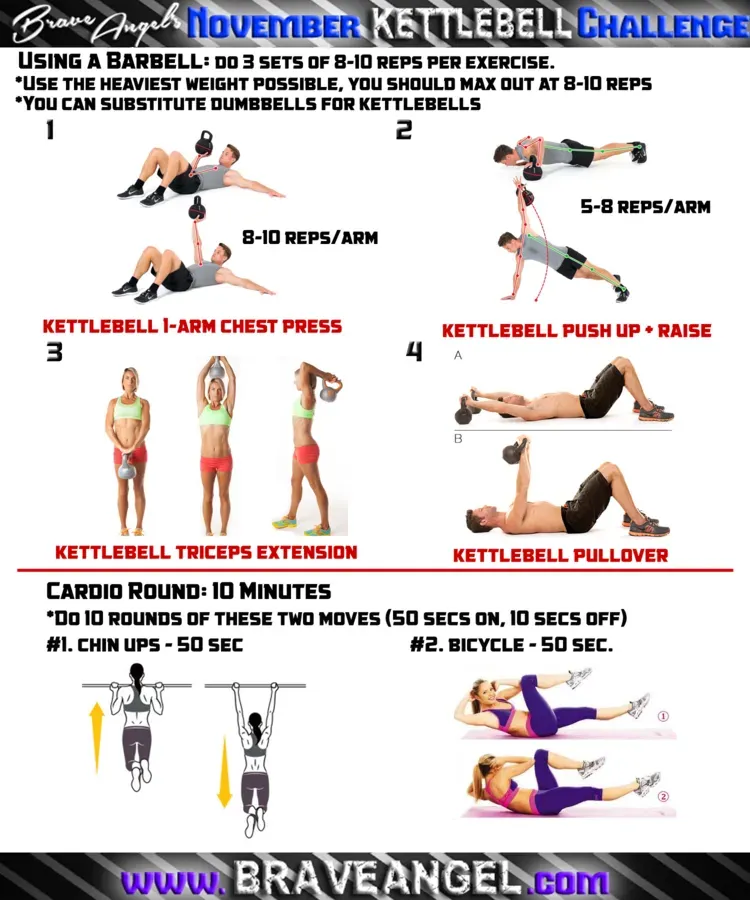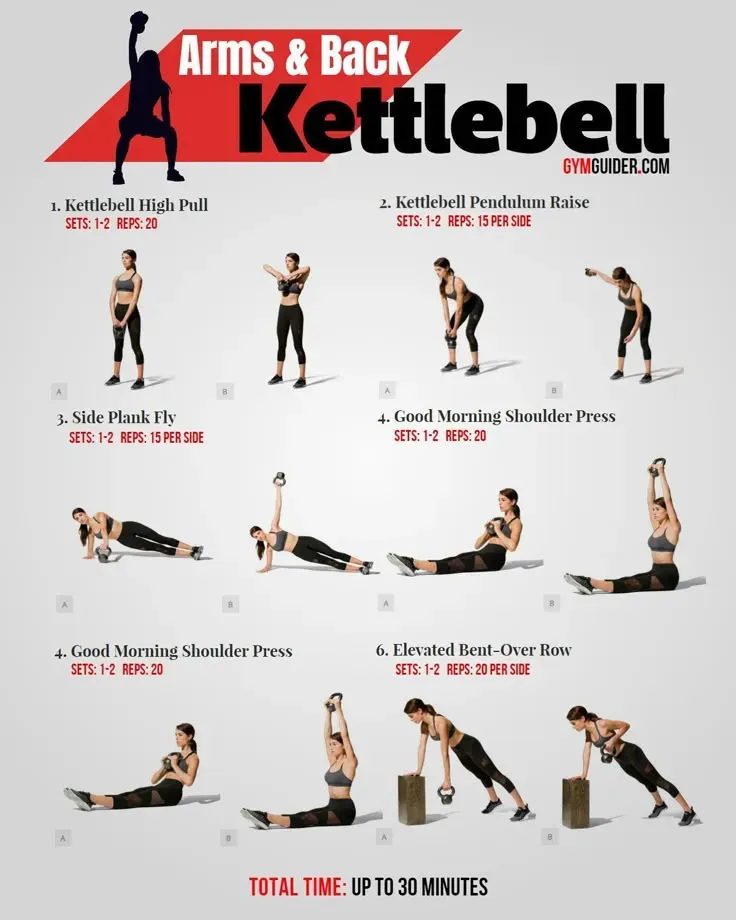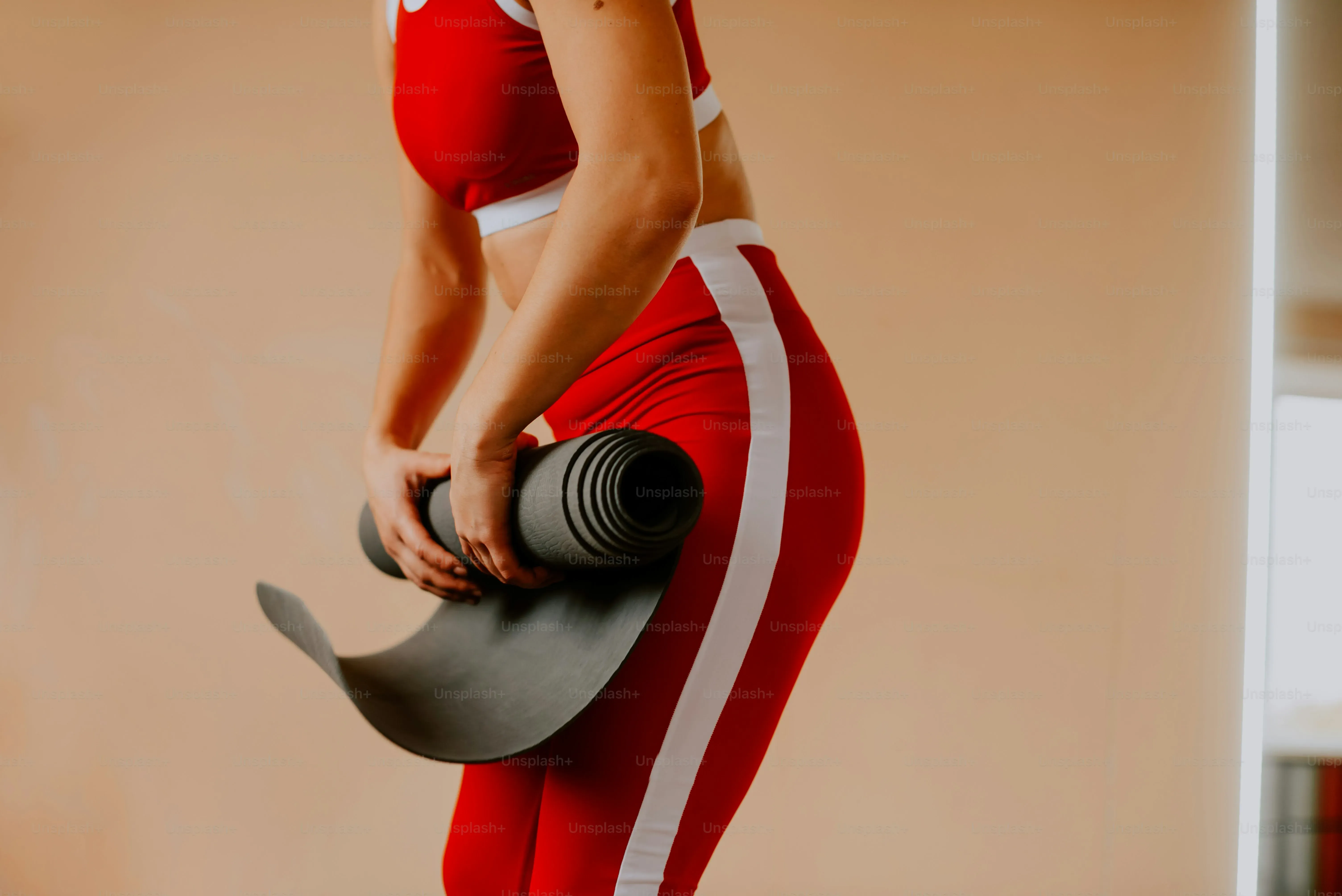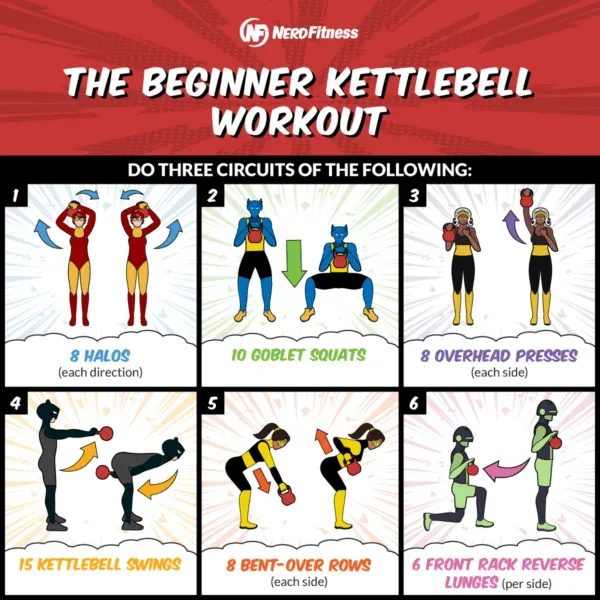Table of Contents
So, you want stronger arms, shoulders, and back, but the weight room feels like a foreign land filled with grunting giants? Or maybe you're just tired of the same old push-ups and want something more dynamic? You've heard about kettlebells, those cannonball-looking weights with a handle, and you're curious. Good. You're in the right place. Starting an upper body kettlebell workout for beginners isn't as complicated or intimidating as it might seem. Forget spending hours deciphering complex routines or needing a gym membership. Kettlebells offer a surprisingly effective way to build real upper body strength and endurance right where you are.
Why Kettlebells for Beginner Upper Body Workouts?

Why Kettlebells for Beginner Upper Body Workouts?
More Than Just Lifting: Functional Strength
Look, you could grab a dumbbell and do some curls. That's fine. But a kettlebell? It's a different animal. The offset weight distribution compared to a dumbbell forces your stabilizing muscles to work harder. When you're doing an overhead press with a kettlebell, your shoulder isn't just pushing weight straight up; it's also fighting to keep the bell from wobbling all over the place. This means you're building strength that translates better to real-world movements – lifting groceries, carrying kids, wrestling a particularly stubborn jar lid. For a beginner hitting their upper body, this functional aspect is gold. You're not just building show muscles; you're building a more resilient, capable body from the get-go with a kettlebell.
Simple Tool, Big Impact: Portability and Versatility
Let's be honest, setting up a home gym with racks and benches is expensive and takes up serious space. A single kettlebell? You can tuck it in a corner. It's portable enough to take outside if the weather's decent. This little iron ball is incredibly versatile for an upper body kettlebell workout for beginners. You can press it, pull it, hold it, swing it (though swings are more lower body focused, holding the bell still works the upper back and core). You don't need a dozen different weights to get a good session in. One or two kettlebells can provide a challenging and comprehensive workout for your chest, shoulders, back, and arms, making it an excellent starting point.
- Saves space and money compared to a full dumbbell set.
- Forces stabilizer muscles to engage more than dumbbells.
- Builds functional strength for everyday tasks.
- Offers a wide variety of exercises with just one piece of equipment.
- Improves grip strength naturally through holding the bell.
Essential Kettlebell Exercises for Beginner Upper Body Strength

Essential Kettlebell Exercises for Beginner Upper Body Strength
The Overhead Press: Your Foundation Builder
Alright, let's talk pressing. For your upper body kettlebell workout for beginners, the overhead press is non-negotiable. Think of it as your primary driver for shoulder and triceps strength. Unlike a barbell or even dumbbells, holding that kettlebell by the handle, racked at your shoulder, feels different. The weight hangs below your hand, challenging your shoulder stability from the get-go. You'll stand tall, core braced like you're about to take a punch, and press the bell straight up until your arm is fully extended, then control it back down. It’s a pure test of strength and control.
The Kettlebell Row: Pull Your Weight
You can't just push; you've got to pull too. The kettlebell row is crucial for building a strong back and biceps, balancing out all that pressing. For beginners, a simple bent-over row is a great starting point. You'll hinge at your hips, keeping your back flat, and pull the kettlebell towards your hip, squeezing your shoulder blade at the top. The kettlebell's shape allows for a deep stretch at the bottom and a solid contraction at the top. This move targets your lats, rhomboids, and traps – basically, all the stuff that helps you stand up straight and avoid that dreaded desk-slouch.
Ready to try a couple? Here are the basics:
- Overhead Press: Stand with bell racked at one shoulder, elbow tucked. Press straight overhead, palm facing forward or slightly in. Lower slowly.
- Bent-Over Row: Hinge at hips, flat back. Let bell hang. Pull towards hip, squeezing shoulder blade. Lower with control.
- Floor Press: Lie on back, knees bent. Hold bell at chest. Press straight up like a bench press. Lower slowly.
The Kettlebell Floor Press: Chest Work Without a Bench
No bench? No problem. The kettlebell floor press is a fantastic way to hit your chest, shoulders, and triceps safely. Lie on your back with your knees bent, feet flat on the floor. Hold a kettlebell in one hand, racked at your chest. Press the bell straight up towards the ceiling, just like a regular bench press, but your elbow will stop when your upper arm touches the floor. This limits the range of motion slightly, which can be safer for beginners and still provides a solid chest contraction. It's less complex than a full bench press and perfect for an upper body kettlebell workout for beginners at home.
Crafting Your First Upper Body Kettlebell Workout for Beginners

Crafting Your First Upper Body Kettlebell Workout for Beginners
Picking Your First Kettlebell and Getting Warm
so you know the basic moves – press, row, floor press. Now, how do you actually put it together for your very first upper body kettlebell workout for beginners? First things first: the weight. Don't be a hero. For men, starting with a 12kg or 16kg kettlebell is usually a safe bet for upper body work. Women might find an 8kg or 12kg more manageable initially. You want something you can control through the full range of motion for maybe 8-12 reps on the presses, but still feels challenging. If you can bang out 20 reps easily, it's too light. If you can't lift it once without struggling or using momentum, it's too heavy. Simple as that. Before you even touch the bell, spend 5-10 minutes warming up. Arm circles, shoulder rotations, maybe some light bodyweight squats to get the blood flowing. Cold muscles don't like heavy objects being thrown around.
Building the Routine: Sets, Reps, and Rest
Now for the meat and potatoes: the structure. A solid upper body kettlebell workout for beginners doesn't need a zillion exercises. Stick to the essentials we covered. A good starting point is picking 3-4 exercises. For example, you could do Overhead Presses, Bent-Over Rows, and Floor Presses. Perform 2-3 sets of 8-12 repetitions for each exercise. The rep range is key – enough to feel a burn, but not so many that your form crumbles. Pay attention to how your body feels, not just the number on the bell. Rest about 60-90 seconds between sets. This gives your muscles enough time to recover slightly before the next effort, but keeps the workout moving efficiently. Don't scroll through your phone for five minutes; stay focused.
Here’s a sample structure:
- Warm-up: 5-10 minutes (dynamic stretches)
- Overhead Press: 3 sets of 8-12 reps per arm
- Bent-Over Row: 3 sets of 8-12 reps per arm
- Kettlebell Floor Press: 3 sets of 8-12 reps per arm
- Rest: 60-90 seconds between sets
- Cool-down: 5 minutes (static stretches)
Finishing Up and Doing It Again
Alright, you've pressed and you've pulled. You should feel like you've done something, but not completely wrecked. Finish your upper body kettlebell workout for beginners with a brief cool-down. Gentle static stretches for your chest, shoulders, and back can help improve flexibility and signal to your body that it's time to recover. Hold each stretch for 20-30 seconds. How often should you do this? Two or three times a week is plenty for a beginner. Your muscles need time to repair and grow stronger between sessions. Doing too much too soon is a fast track to burnout or injury, and nobody wants that. Consistency, not crushing yourself every single day, is what builds strength over time.
Avoiding Mistakes in Your Beginner Upper Body Kettlebell Routine

Avoiding Mistakes in Your Beginner Upper Body Kettlebell Routine
Alright, you're swinging that bell (or pressing it, or rowing it). That's step one. Step two is not screwing it up. When you're just starting your upper body kettlebell workout for beginners, it's easy to fall into some traps. The biggest one? Ego lifting. Picking a bell that's too heavy means your form goes out the window faster than a dropped kettlebell. You'll compensate with your back, neck, or momentum, which is a one-way ticket to 'ouch town'. Another classic blunder is rushing the movement. Kettlebells aren't about speed, especially when you're learning. Control the weight on the way up and, crucially, on the way down. Don't just let gravity take over. Think of the eccentric (lowering) phase as just as important as the concentric (lifting) phase. Finally, ignoring pain. There's 'good' muscle fatigue and then there's 'bad' joint pain. Learn the difference and back off if something feels sharp or wrong. Pushing through bad pain is just dumb.
Progressing Your Upper Body Kettlebell Workout as a Beginner

Progressing Your Upper Body Kettlebell Workout as a Beginner
Knowing When It’s Time to Level Up
you've been consistently hitting your upper body kettlebell workout for beginners for a few weeks now. You're doing those 3 sets of 10-12 reps for presses and rows, and it feels… easier. You're not struggling on the last few reps, your form stays solid from start to finish, and you recover pretty quickly between sets. This isn't a sign you're suddenly Superman; it just means you're getting stronger. Your muscles have adapted to the current challenge. If you keep doing the exact same thing forever, you'll stop seeing progress. It's like trying to learn advanced math by only practicing addition. You need to increase the difficulty to keep the gains coming. So, when those sets feel comfortably challenging rather than truly hard, that’s your cue.
Smart Ways to Make it Harder
So, how do you actually make your upper body kettlebell workout for beginners more challenging without just randomly flailing heavier weight around? The most straightforward way is progressive overload. You can add a couple of reps to each set (aim for the higher end of that 8-12 range, maybe even push to 15 if your form is perfect). Once you can comfortably do 3 sets of 12-15 reps with good form on all exercises, it's probably time to consider a slightly heavier kettlebell. Don't make a massive jump; even going up by 2kg or 4kg can make a big difference. Another method is adding an extra set. Instead of 3 sets, do 4. You can also decrease the rest time between sets slightly, which increases the density of the workout. Or, introduce a slightly more challenging variation of an exercise – perhaps an incline floor press if you have something sturdy to prop your back on. The key is gradual, consistent increases, not giant leaps.
Methods for Progression:
- Increase reps per set (e.g., from 8 to 10, then to 12).
- Add more sets (e.g., from 3 sets to 4 sets).
- Use a slightly heavier kettlebell.
- Reduce rest time between sets.
- Introduce slightly more challenging exercise variations.
- Focus on slower negatives (lowering the weight more slowly).
Your Kettlebell Upper Body Start Line
Look, building a stronger upper body with a kettlebell isn't some mystical art. It's about picking the right tools – in this case, a kettlebell and a few solid exercises – and actually doing the work. We've covered the basics: why this weird-looking weight works, the fundamental moves to get you started, and how to put them into a routine that makes sense for a beginner. Avoid the common screw-ups, focus on form over lifting heavy too soon, and be consistent. That's pretty much the secret sauce. You've got the information; now the only thing left is to grab a kettlebell and start moving. Nobody got stronger just by reading about it.